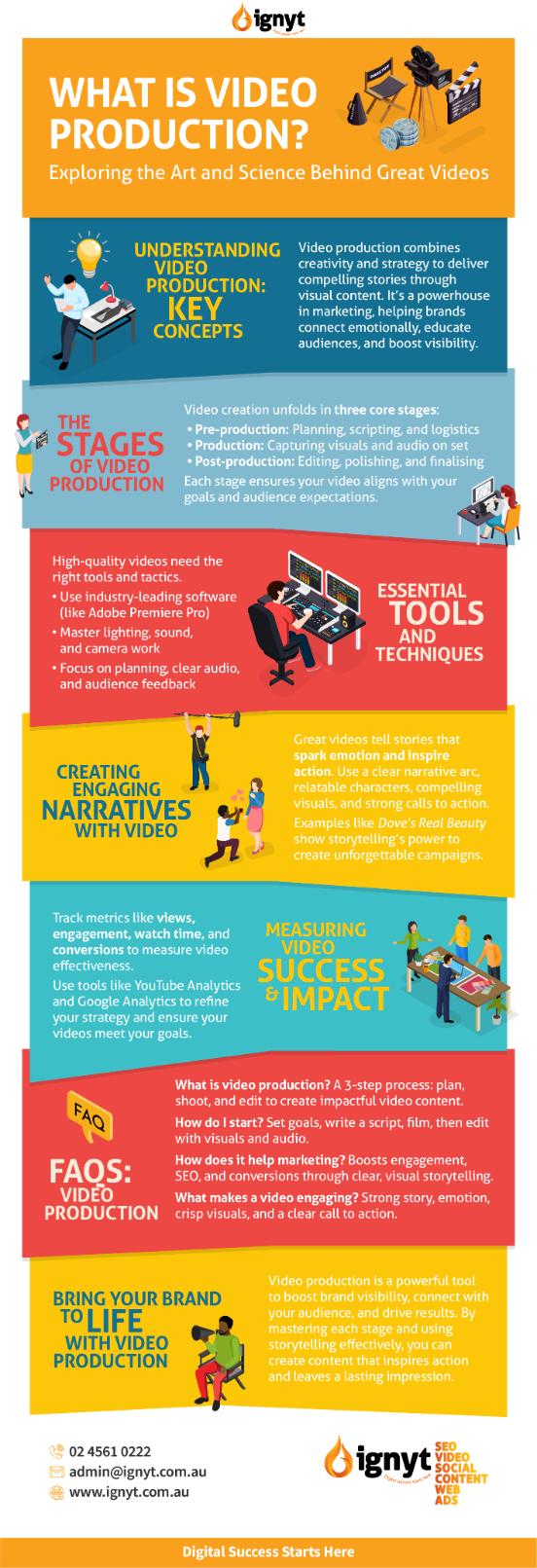Storytelling is a must-have for grabbing and keeping an audience’s attention.
It’s more than just visuals and sounds; a good story creates an emotional bond with viewers, making the content stick and have an impact.
By using storytelling techniques, creators can connect with audiences on an emotional level, explain complex ideas easily, and inspire them to take action.
Incorporate these key elements to create an engaging story:
1. Strong narrative arc:
A compelling video begins with a well-defined narrative arc that clearly incorporates a setup, conflict, and resolution.
The setup introduces the context and characters, drawing viewers into the story.
The conflict presents obstacles or challenges, keeping the audience engaged and invested in the outcome.
Finally, the resolution ties together the elements of the story, providing a satisfying conclusion that resonates with viewers. A strong narrative arc captivates the audience and delivers the message effectively.
2. Relatable characters:
Characters play a crucial role in connecting with the audience. Characters should be multidimensional and well-developed, showcasing a range of emotions and experiences.
By creating characters that viewers can empathise with, the video becomes more impactful, as audiences are more likely to engage with and remember stories that resonate with their own experiences or aspirations.
Relatable characters serve as the bridge between the narrative and the audience, making the story more personal and compelling.
3. Powerful visuals & complementary audio:
The use of powerful visuals and complementary audio enhances the storytelling experience. High-quality visuals capture the viewer’s attention and convey the message more vividly, while the audio—whether it’s dialogue, sound effects, or background music—works in harmony to amplify the emotional impact of the visuals.
Together, they create an immersive experience that draws viewers in and keeps them engaged throughout the video. Thoughtful integration of these elements can transform a simple narrative into an unforgettable story.
4. Call to action:
A well-crafted video often culminates in a clear and concise call to action, which guides the viewer towards a desired response or behaviour after the video concludes.
Whether it’s encouraging viewers to visit a website, share the video, or reflect on a particular message, the call to action should be aligned with the video’s overall objective.
By providing a clear next step, the video not only leaves a lasting impression but also engages viewers meaningfully, prompting them to take action.
Examples of Successful Video Campaigns
Numerous video campaigns have epitomised the power of storytelling by effectively resonating with their target audiences.
For example:
- Dove’s “Real Beauty” campaign successfully challenged beauty stereotypes and sparked a global conversation, aiding in brand recognition and customer loyalty.
- Nike’s “Dream Crazy,” featuring athletes like Colin Kaepernick, combined the narrative of perseverance and social justice with powerful imagery, solidifying its position as a thought leader in both sports and societal issues.
These campaigns show how effective it is to weave a strong story into videos, making them not just engaging but also memorable for viewers.



















